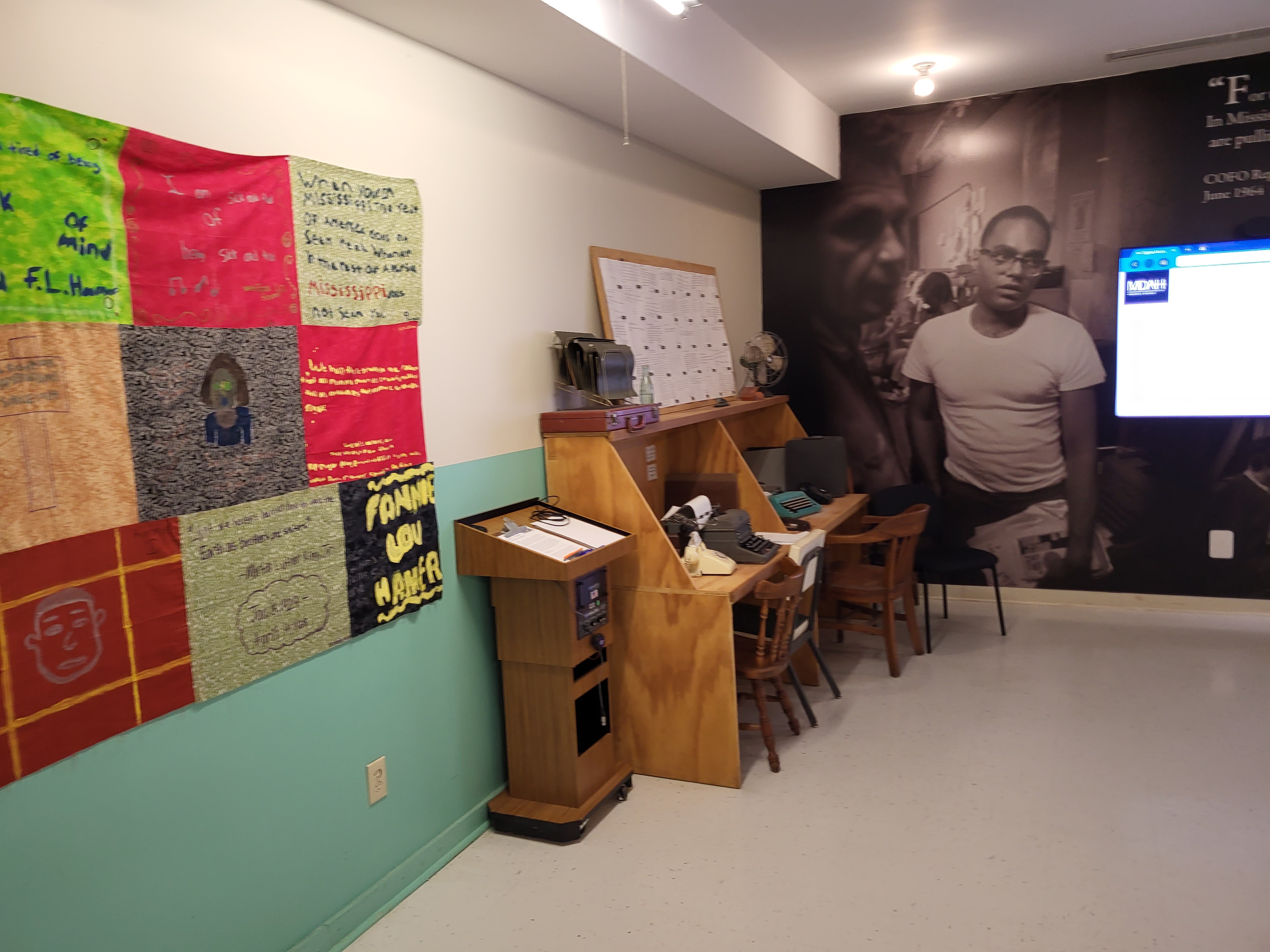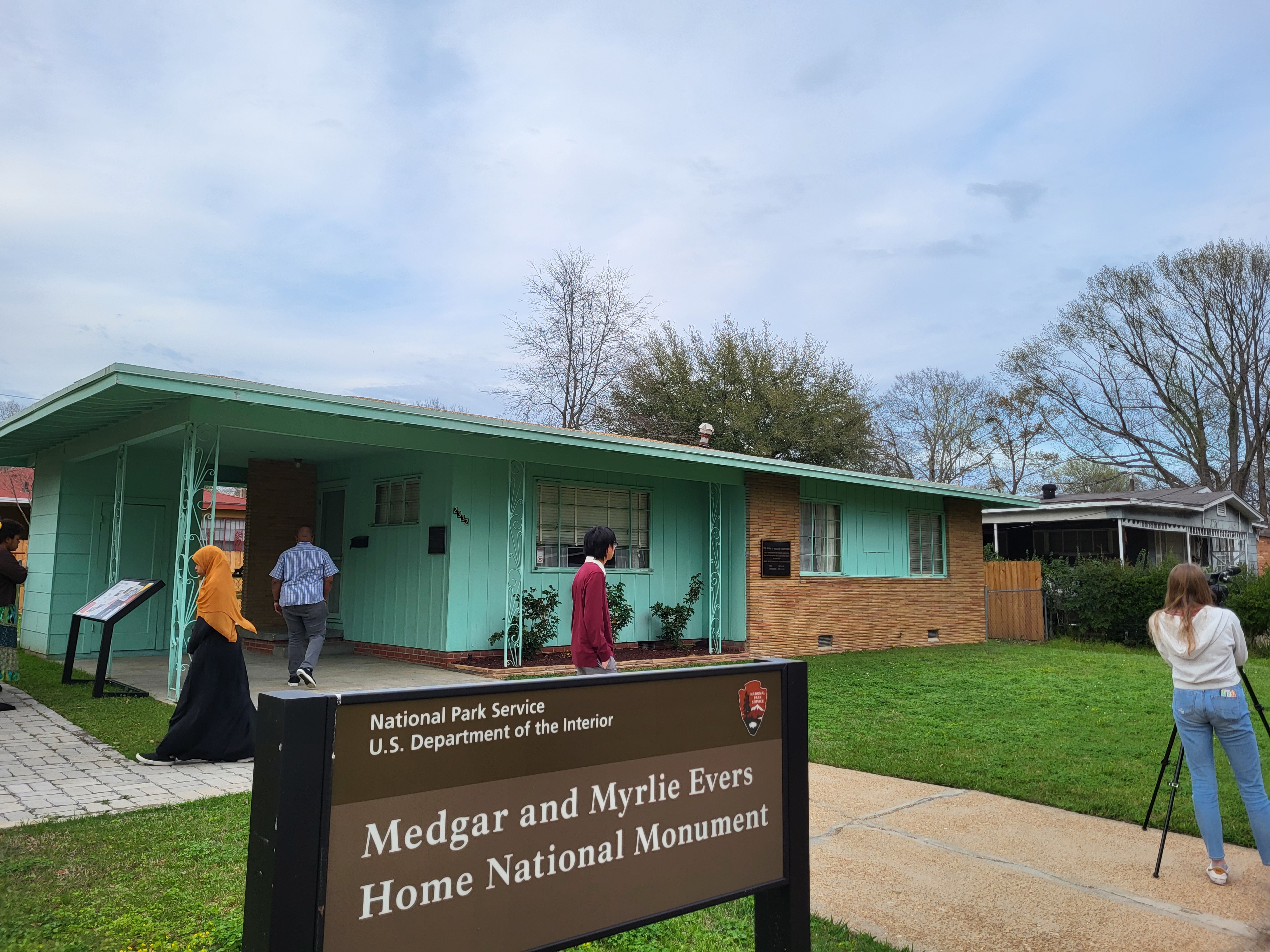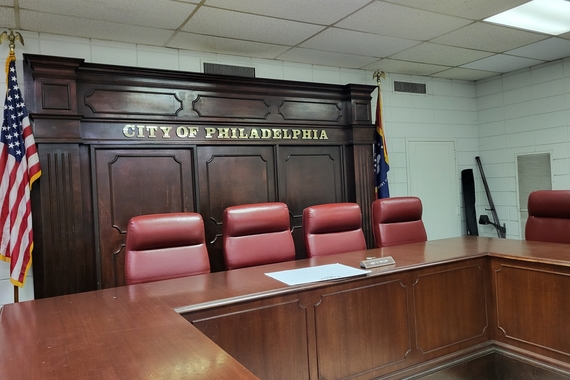MLK Immersion Day 5: Jackson, Mississippi
Video of Jackson activities by Calli Hadler
JACKSON, Miss. - After a heavy day in Montgomery, Ala., students in the University of Minnesota’s MLK 3000 course learned more about the Civil Rights Movement in Mississippi on Thursday.
The day started at the headquarters of the Council of Federated Organizations (COFO), an organization founded in 1961 and led by Bob Moses, Dave Dennis and Aaron Henry. COFO served as somewhat of an umbrella organization for multiple national organizations.
These organizations included but are not limited to:
- The Student Nonviolent Coordinating Committee (SNCC)
- The Congress of Racial Equality (CORE)
- The Southern Christian Leadership Conference (SCLC), of which Rev. Dr. Martin Luther King Jr. was the first president.
- And the National Association for the Advancement of Colored People (NAACP)
One of COFO’s largest movements was the Mississippi Summer Project, better known as Freedom Summer, which aimed to increase voter registration for Black Mississippians in the Summer of 1964. It was the target of hate from the Ku Klux Klan, who killed three Freedom Summer volunteers, James Chaney, Michael Schwerner and Andrew Goodman in Philadelphia, Miss.
The class heard from Garrad Lee, the digital humanities program manager at Jackson State University’s Margaret Walker Center, and Angela Stewart, archivist with the center.
The center, founded in 1968 by Black poet Margaret Walker on the Jackson State University campus as the Institute for the Study of the History, Life, and Culture of Black People, is also in charge of running the original COFO headquarters, which lay a short distance from campus.
Stewart said the teamwork required for COFO is a lot more than it may seem.
“Oftentimes we think people just were automatically were able to come together,” said Stewart. “It took conscious effort for consensus and a willingness to deal with conflict for COFO to be able to work.”
Lee said he believes that learning in preserved spaces helped to better inform.
“You can’t read about being in this space,” Lee said. “You can read histories, you can read primary sources, but this is a room that is a primary source.”

After a presentation from Stewart about COFO’s significance, Lee gave the class a brief tour around the campus of Jackson State University, including the Mt. Olive cemetery, a cemetery designated for Black people and the burial site of unknown people who were enslaved.
Lee also took the class to Alexander Hall, the location of a 1970 police shooting that killed two Black men, Phillip Lafayette Gibbs and James Earl Green. Police shot after protests sparked on the campus after the Kent State University shooting, which resulted in four unarmed students’ deaths.

After a brief lunch on the JSU campus, the class met with Dave Dennis, founding member and assistant program director of COFO.
Dennis said his journey during the Civil Rights Movement evolved as time went on. He initially joined because he wanted to date Doris Castle, a civil rights activist in New Orleans and one of the youngest Freedom Riders. But as he began his first freedom ride, Dennis volunteered to board the bus first.
Dennis remembered a quote said by someone before the freedom ride, and how it changed his perception of fear.
“Someone said there’s not enough space in this room for both god and fear,” Dennis said. “All of a sudden, there was no fear. That was my turning point of the Civil Rights Movement.
Dennis said how he’d like the future generations to approach injustice.
“All I can ask is get upset. Get angry about something,” Dennis said. “Evil tends to raise its head in different kinds of ways. Wherever you go, take a message.”
Afterward, the class ventured to the Mississippi Civil Rights Museum, and learned a bit more about Mississippi’s history during the Civil Rights Movement.
Later during a video at the Mississippi Civil Rights Museum, fourth-year student Alexis Cohcran-Starr noticed a recording of Dennis recounting the 1964 murder of his friend James Chaney, which she said further humanized him.
“I just sat with him and talked with him as he’s an 80 year old. Two hours later I go and I watch this video of him and the sentence that he says in it is that he doesn’t want to go to any more funerals,” Cochran-Starr said. “It reminded me that he’s a human and that was his friend who passed away, and he still has to live with that.”
The final stop in the class’s penultimate day of Civil Rights Movement sites was the home of Medgar and Myrlie Evers. Medgar, a civil rights activist and first Mississippi field secretary of the NAACP who helped to establish more NAACP chapters across the state, was assassinated in his driveway by KKK member Byron De La Beckwith in 1963.
De La Beckwith was prosecuted twice in 1964 for his murder of Medgar, but both ended in mistrials after all-white juries deadlocked. In 1994, Myrlie Evers, then-chairwoman of the NAACP, fought to reopen the case.
Thirty years after the assassination of Medgar Evers, a jury found De La Beckwith, who was 73, guilty for the murder. He was sentenced to life in prison.

MLK 3000 instructor Ezra Hyland, said how much he appreciates the trip and being able to be a part of history.
“History is not the past. History is a current event,” Hyland said. “This has been a wonderful opportunity for us, to see how we got here. It’s something I think that everyone in America should try and do.”
By Alec Zadra



